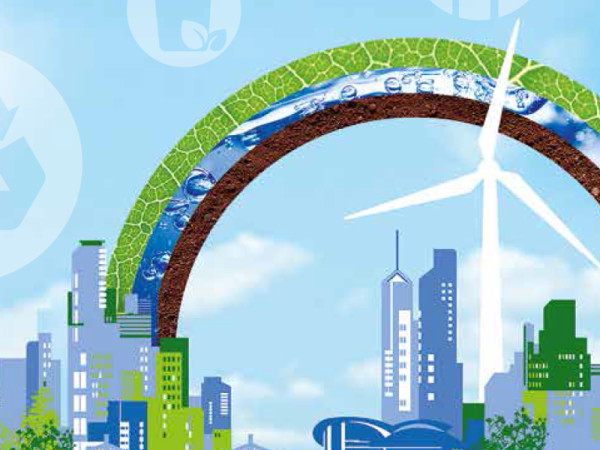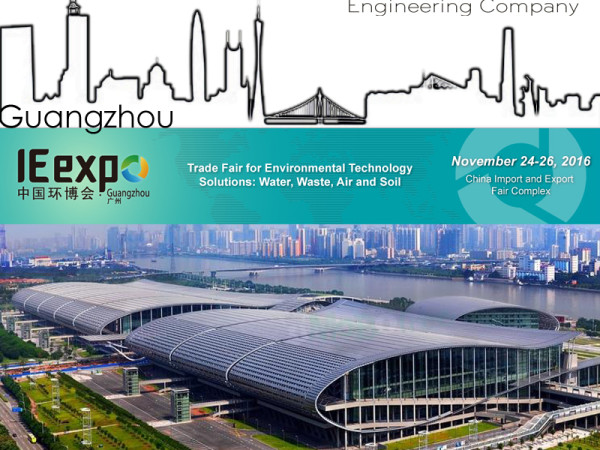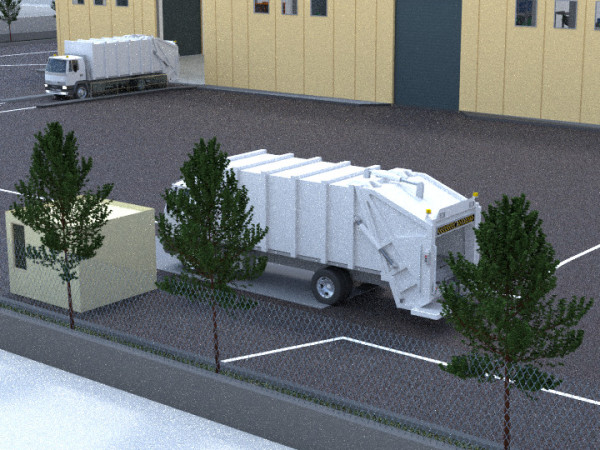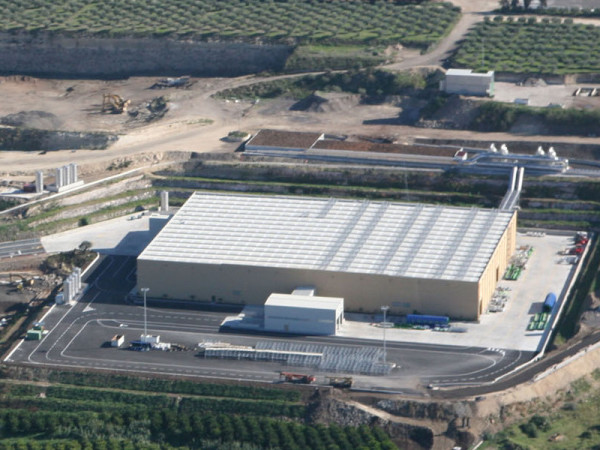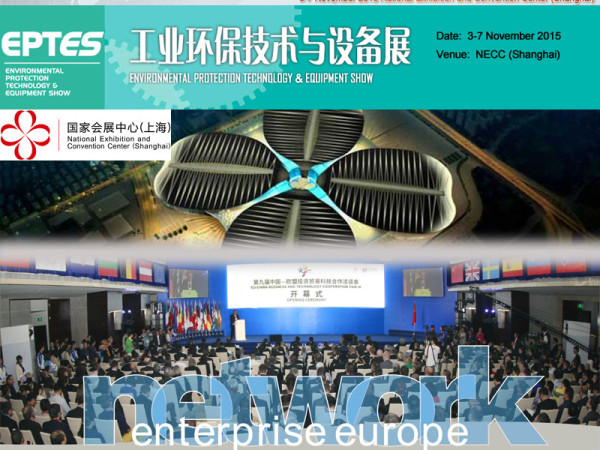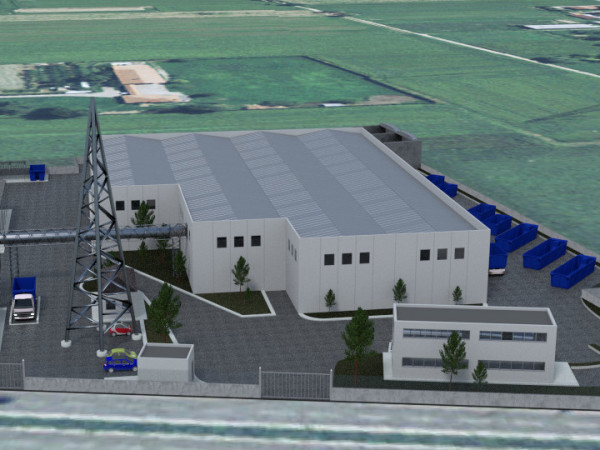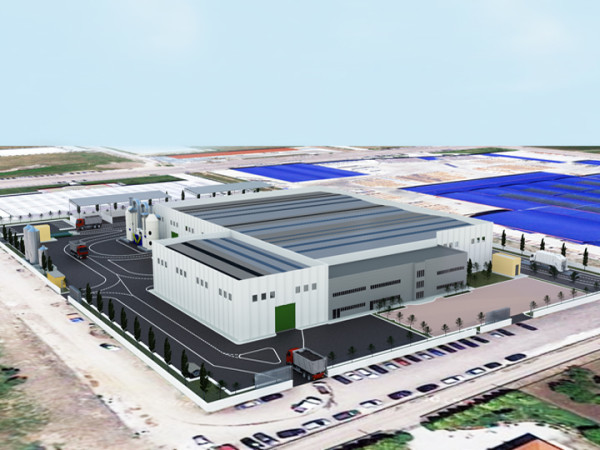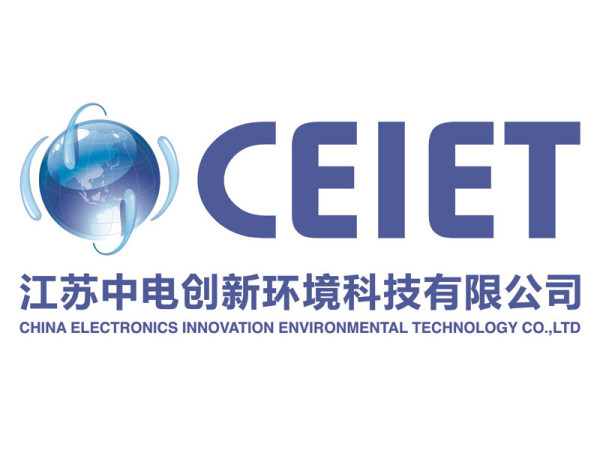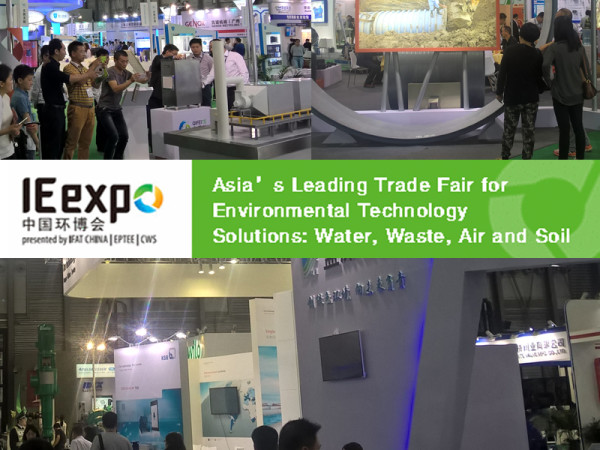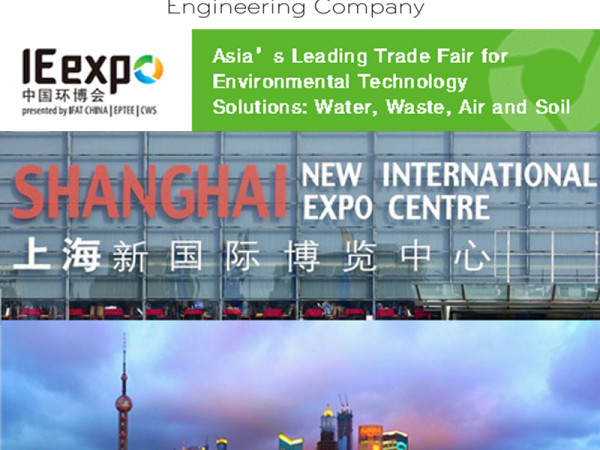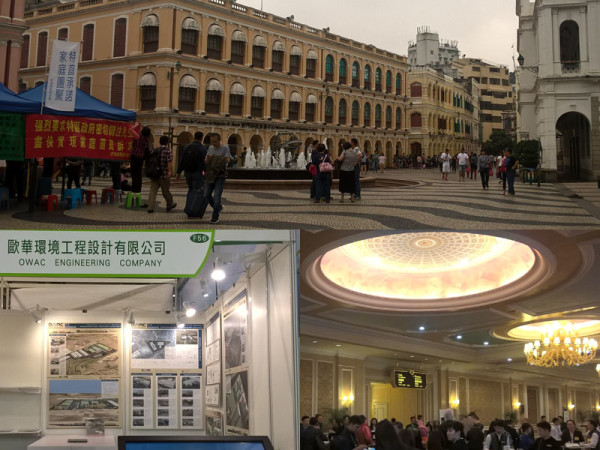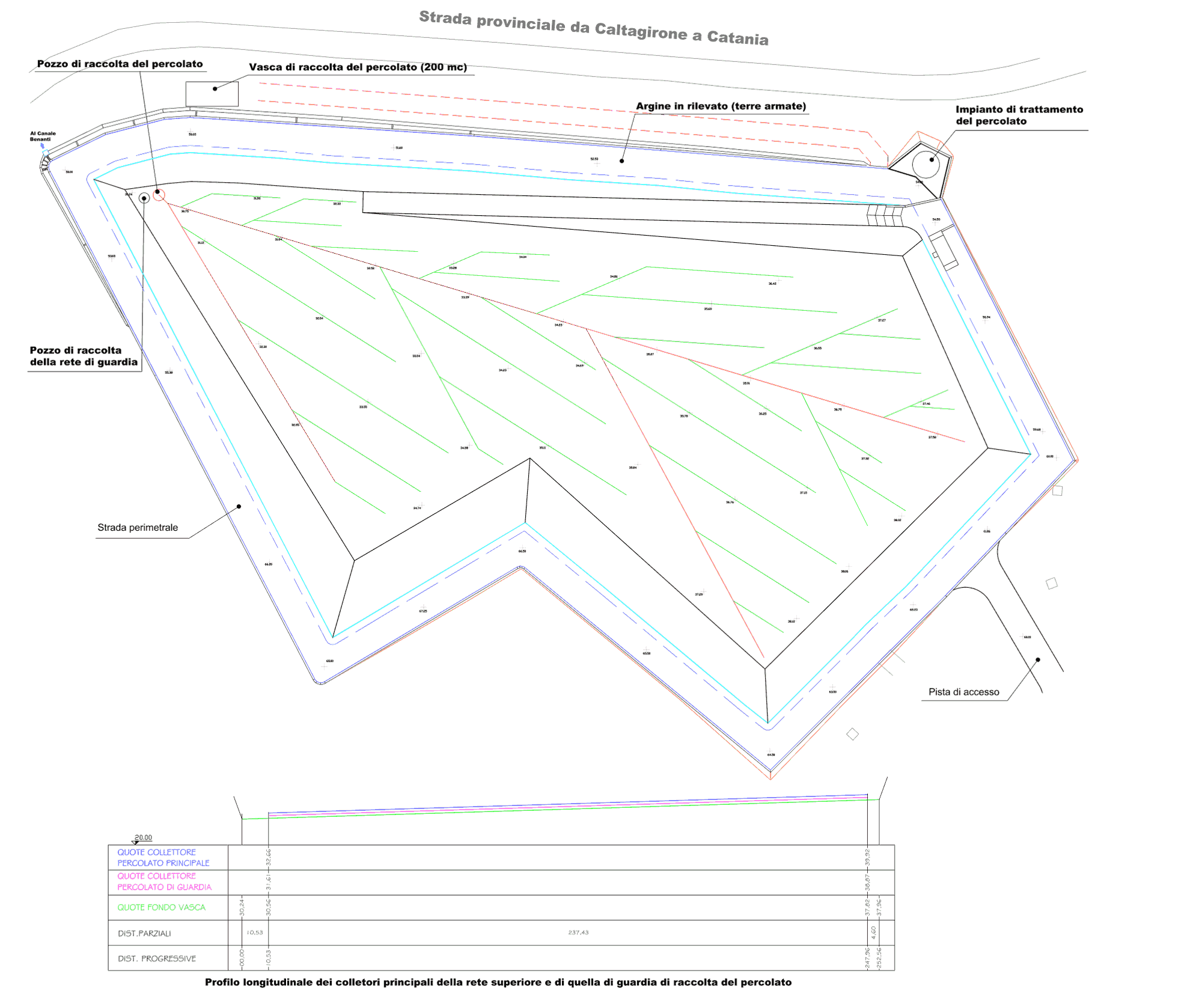
Plant data
Features
- Location: Lentini (SR)
- Coord. UTM (Zone 33S):
502,790 E – 4,135,950 N - Site area: 3.5 ha
- Surface of the landfill basin:
27,000 m² - Total Volume: 500,000 m³ diveded into 5 lots
- Design level: final design
- Design period: 2008
- Assignment: Final design, Environmental Impact Study and AIA (Environmental Integrated Authorization) proceedings
- Cost: 20,253,775.00 €
Treatment
- Operations according to All. B and C at Part IV of D.Lgs. 152/06 s.m.i.: D1, D9, D15
- Expeted potentiality: 40,000 ton/year
- Expected operating life: 7 years
- Days of disposal per year: 350
- Maximum production of leachate expected: 10 m³/day
- Maximum theoretical biogas production expected: according to the non-biodegradable nature of asbestos-containing materials, any biogas production is not expected.
Accessory equipment
- Leachate treatment system: ultrafiltration system divided into a conditioning section of safety, a treatment section and a washing section of the membranes. The treatment capacity is approximately 12 m³/day
(S0013)
Plant description
The system is configured as a strategic work in the integrated management of waste in order to reduce the disposal costs of Asbestos Containing Materials and it falls under the category of landfills for the transfer of hazardous waste, in accordance with D.Lgs. n. 36/03 and D.Lgs. n. 152/06, as amended. The main type of waste delivered will be constituted by asbestos-containing materials from remediation sites of these materials (EWC codes planned: 06 07 01*, 06 13 04*, 10 13 09*, 10 13 10, 15 01 11*, 16 02 12*, 17 06 01, 17 06 05*, 19 03 04*, 19 03 06).
The plant has been designed in such a way as to allow a waste management conferred in separate cells on the basis of the typology and the dangerousness of the same material; in total were provided n. 5 cells managed separately and independently from each other for a total volume of approximately 500,000 m3 available. Particular attention has been taken in the design of the waterproofing layer at the bottom and on the walls, in order to avoid any possibility of leaching of pollutants into the ground water; placed materials (carefully sealed) will be daily covered with inert material in order to avoid any possible air dispersion of fibers or waste.
On the bottom of the landfill has been arranged a double network for the uptake of the leachate from the waste delivered, the first for the ordinary drainage and the second, the lower one, for the safety drainage. The networks of leachate converge to two separate wells of the collection and recovery, in order to allow temporary storage of leachate within separate and dedicated units; leachate is then pumped to the treatment plant, from which is obtained a clarified effluent (compatible with the limits established by D.Lgs. n. 152/06, as amended, for discharges into the surface water bodies receptors).

